On the way to my local corner shop, I spied a grass I didn’t recognise. It had a strangely silvery inflorescence and its leaves were Agrostis-like. I picked a small piece and took it home. Struggling with the grass keys in my dog-eared Hubbard and my rarely consulted Cope and Gray, it came out as Water-Bent Grass. I thought “but it doesn’t grow in Scotland, it’s a water-grass and the edge of a Morningside pavement isn’t aquatic. I’ve got it wrong”.
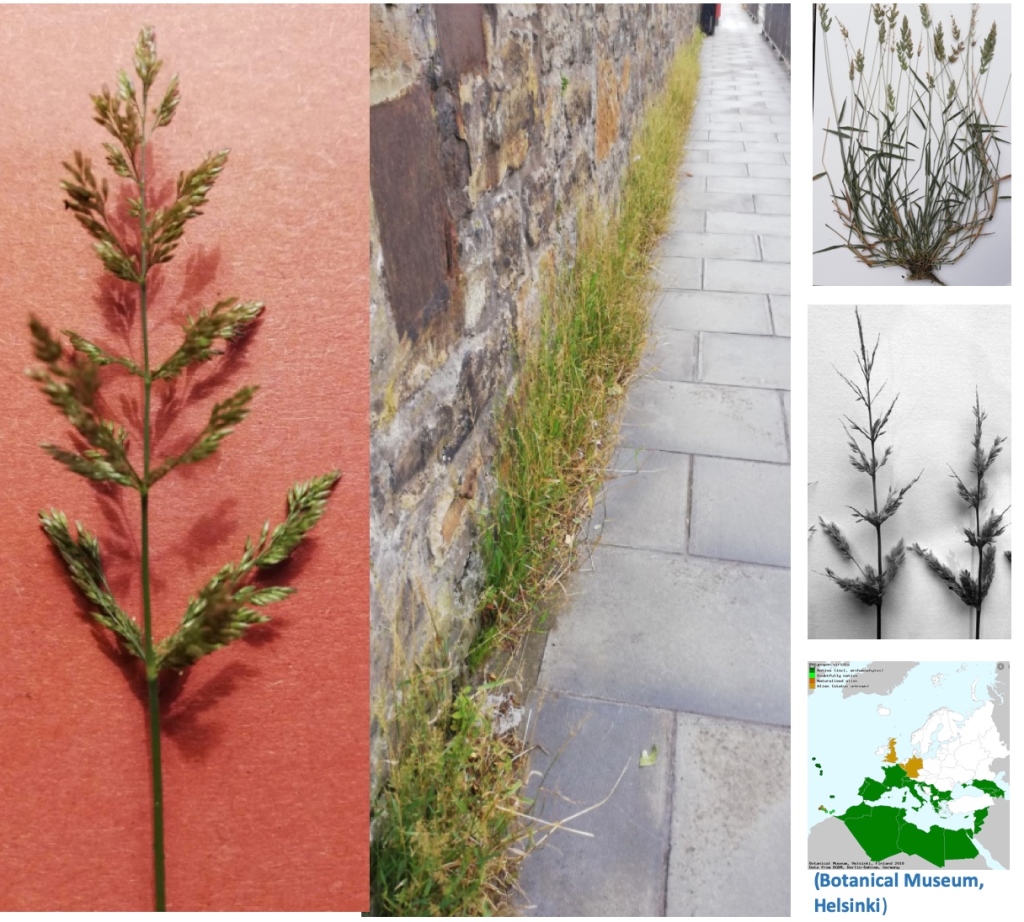
A week later (we are talking 2019) I happened to run into Lyn Jones1 at the Dundee Flower and Vegetable Show whilst looking for Brian Ballinger. Lyn was perusing the onions. I told him about the mystery grass, and brought a small wilted piece from by bag. “Oh, it’s Water-Bent” he said, “there’s loads of it in Leith”. He proceeded to fiddle with his mobile phone, and soon came up with an image of it, magically conjured from the aether (or probably from the cloud, as we must say these days).
Back home, I turned to Plant Life of Edinburgh and the Lothians, published 20 years ago. The senior author, Philip Smith, was a grass expert and known for leaving no stone unturned. However, Water Bent, Polypogon viridis is in small print only, with the note “Musselburgh 1913, Braehead Quarry 1978”. I tried Google, and up came a conference-poster from two Sheffield botanists, Ambroise Baker and Oliver Pescott. Water Bent had turned up in Sheffield. They noted:
“Polypogon viridis is one of the fastest spreading plants in the British Isles, especially in urban habitats. However, we do not know the reasons for this sudden increase, or the real extent of its spread, because there may be a time lag between colonisation and recording”.
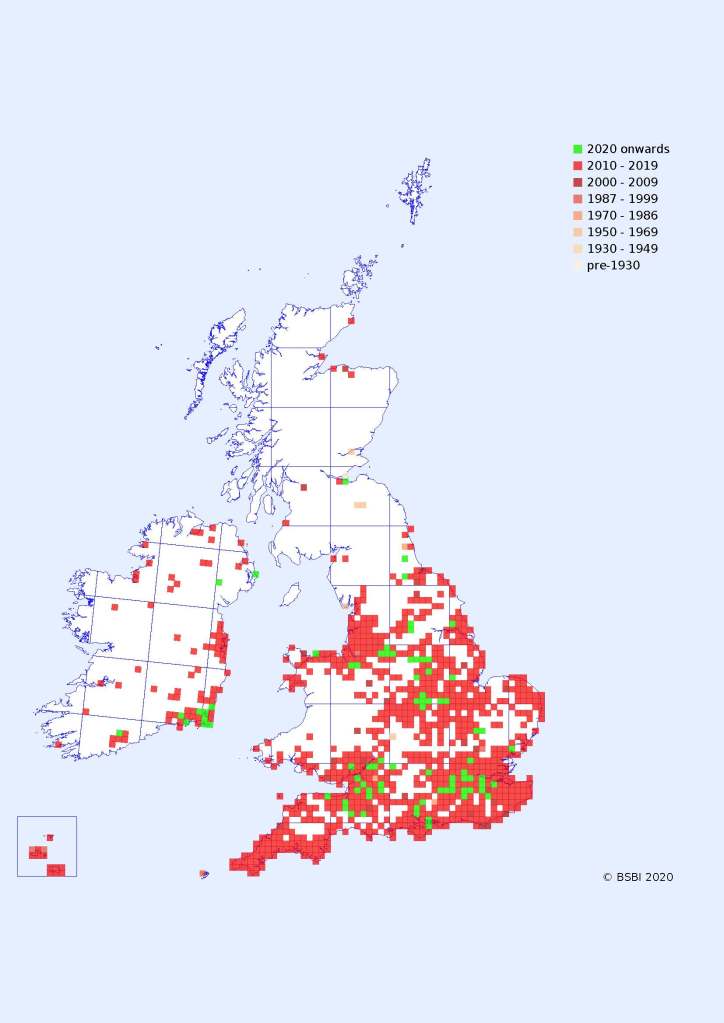
I took a few photographs at my local site where it had survived the usual herbicide drenching, and made a pressed specimen for the 2019 Scottish Botanists’ Conference in Edinburgh. When I mentioned the species to David Chamberlain and others at our monthly Urban Flora meeting I realised I had come rather late to the game: David had already presented an exhibit about it at the 2018 Scottish Botanists’ Conference with a specimen and photographs by Chris Jeffree. He had been seeing it at Dean Bridge for the last five years and in the last couple of years at numerous locations around the Dean Bridge and Stockbridge areas. His sighting is confirmed by a specimen from the Dean Bridge lodged in the RBGE Herbarium in 2015 (collected by Stuart Maxwell). During David’s Lockdown wanderings he has recorded it in seven of the Edinburgh monads, at locations ranging from King’s Buildings to Drylaw. Also during Lockdown walks, I found Polypogon viridis by pavements in the New Town and many times in Easter Road. The large population in South Morningside (opposite to South Morningside Road) has persisted and enlarged somewhat; individual plants are growing now just outside South Morningside school.
In preparing this article, I contacted Lyn Jones again. He said:
“I first saw Polypogon in Edinburgh on the road up from Dean Bridge about four years ago – but thought nothing of it and certainly did not think to record it, being very familiar with it from Jersey as a relatively common grass widely scattered on roadsides at the side of walls”.
I also contacted Barbara Sumner, the Recorder for Midlothian. The first record in the data-base had been M. McCallum Webster’s entry of October 1978, from Braehead Quarry Tip (NT1773) for which there is a voucher specimen in the Herbarium at RBGE. The next recorded find was in 1993, then 2000 and 2007, and from 2012, more and more finds.
In the last few days, Chris Jeffree has contacted me to say “Went to Glasgow this morning and bumped into what I think is Polypogon viridis in Hanson Street, Dennistoun”.
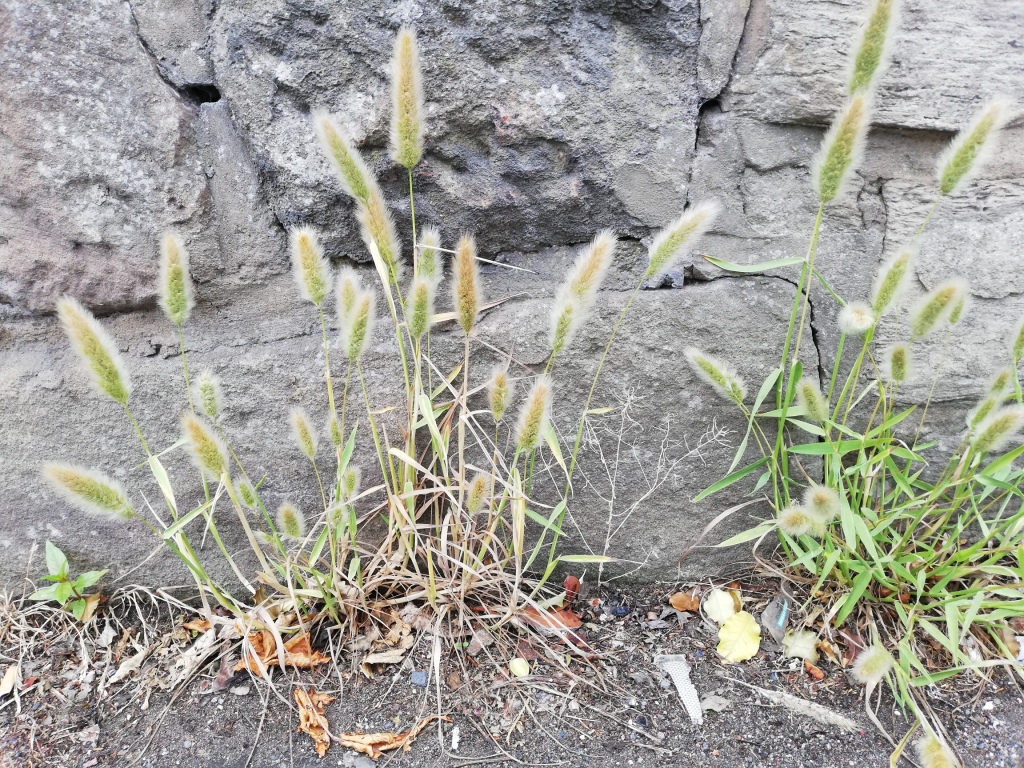
Despite its rapid spread, there is a dearth of ecological knowledge on this species (when I searched on the Web of Science nothing came up). I found a few references on Google Scholar: they were for articles in the ‘grey literature’ referring to its sudden appearance in new geographic regions, an entry in the Flora of China and a short entry in the 2005 Newsletter of the BSBI saying the species was ‘everywhere’ in London (Burton 2005). Searchers beware: It has changed its name a few times. In old books (like my 1968 second edition of Hubbard) it is called Agrostis semiverticillata, sometimes Agrostis verticillata.
It comes from southern Europe and north Africa. Its global distribution is bewildering. It seems it can tolerate a wide range of climatic regimes – from hot dry deserts to Atlantic Islands. It is excluded from the humid tropics and the extreme north, but it can thrive in most other places. How does it disperse so effectively? After flowering, the spikelets detach as a unit, leaving only the pedicels behind (see the first picture). These units fall to the ground nearby – they are too big and heavy to be swept far by the wind. They probably stick to mud very well, and I image they travel in the treads of vehicle tyres.
Maria Chamberlain writes: “The usual habitat in the urban environment is in cracks between walls and pavements. It is probable that water will accumulate in these cracks, creating a moist habitat even when the rest of the pavement dries out. If the road slopes, the water will flow downhill, taking its propagules with it. Traffic movements may also aid its spread. David Chamberlain has recorded it in close association with Spergularia maritima, Cochlearia danica and Sagina marina on a traffic island at Comely Bank and has also seen it associated with Spergularia maritima in Stockbridge and Restalrig. Does this imply that it is in some way associated with salt used to de-ice roads”?
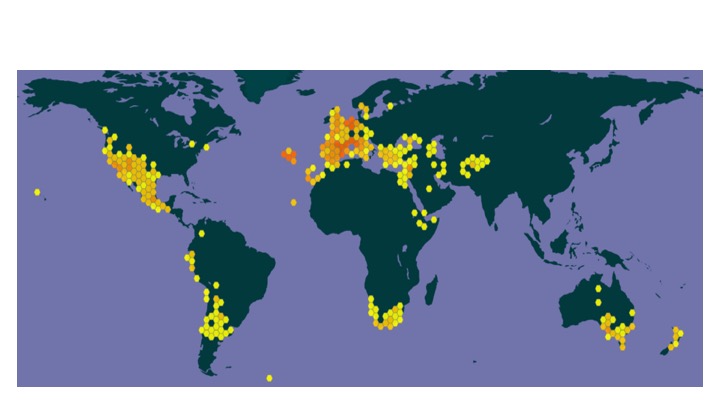
The most complete description I found of its habitat in Europe was from Belgium (Anon 2020), as follows:
“Formerly an exceptional and casual wool alien in the Vesdre valley, last seen (there) in 1939. Between 1958 and 1967 occasionally seen on a dump near Mechelen, perhaps as a birdseed alien. Recently much increasing and becoming naturalised in urban areas in many cities in Flanders, for instance in Aalst, Antwerpen, Blankenberge, Brugge, Gent, Oostende,… (surely still widely overlooked elsewhere). Commonly found as a pavement weed, against foot of walls, temporarily damp ruderal areas,… (see Verloove 2006 for a recent account for Flanders). Also much increasing as a troublesome weed in plant nurseries, for instance in an abandoned nursery in Boechout in 2007. Also regularly recorded in containers (Hoste & al. 2009). More rarely seen in rather remote localities without obvious vector of introduction (possibly as a result of roadworks or introduced by waterfowl) (see for instance: Duvigneaud & Saintenoy-Simon 1999 for a record in northern France, close to the Belgian frontiers)”.
I was interested in the Belgian mention of it being a wool alien because there is an old record of Polypogon viridis from Melrose, downstream of Galashiels, formerly a centre for wool-textiles.
We may conclude that this species has shown remarkably powers of dispersal and establishment, very effectively exploiting urban habitats. I wait eagerly for further Scottish records, and I hope someone somewhere is finding out more about its ecological characteristics.
Postscript
It has a showy relative Polypogon monspeliensis (Annual Beard-grass) which turned up in Edinburgh this year (near the Water of Leith Visitor Centre, Longstone). This species is considered to be a noxious weed in some parts of the world but in Britain it’s a pretty garden species that you can buy on-line. Both David Chamberlain and Henry Noltie have separately recorded it at Tollcross.
Stop Press – new images
As I was finishing this blog, I found new images in an email from Chris Jeffree. With his permission, I’ve uploaded them for this article.



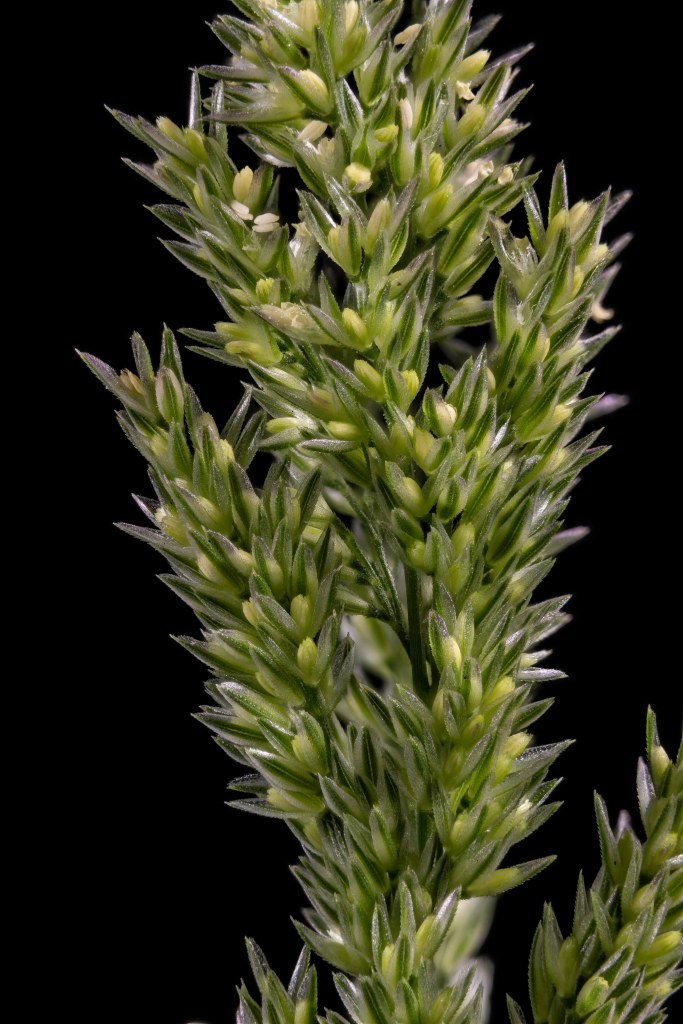
Polypogon viridis, new images from Chris Jeffree, showing detail of inflorescence
References
1Hamlyn G Jones is Emeritus Professor, University of Dundee, author of Plants and Microclimate and Remote Sensing of Vegetation: Principles, Techniques, and Applications. Recently he has become interested in identification of plants using an Artificial Intelligence approach (https://bsbi.org/wp-content/uploads/dlm_uploads/BSBI-News-144-pp34-40-plant-id-apps-final.pdf). He will be talking about this at our lecture on Nov 19th, the title of which is What plant is that? Are smartphone apps the answer? You are of course most welcome. Watch our for details at https://www.botanical-society-scotland.org.uk/node/572
Anon (downloaded 10th Sept 2020) http://alienplantsbelgium.be/content/polypogon-viridis
Burton R (2005) Foreign grasses in London streets. BSBI News 100: 48-49.
Cope T & Gray A (2009) Grasses of the British Isles. BSBI.
Hubbard CE (1968) Grasses. Penguin Books.
Excellent report about this plant. Which is new to me. Now seen it in several places on Aberdeen Urban Flora weekend. Will keen my eyes open to it when out recording.
LikeLiked by 1 person